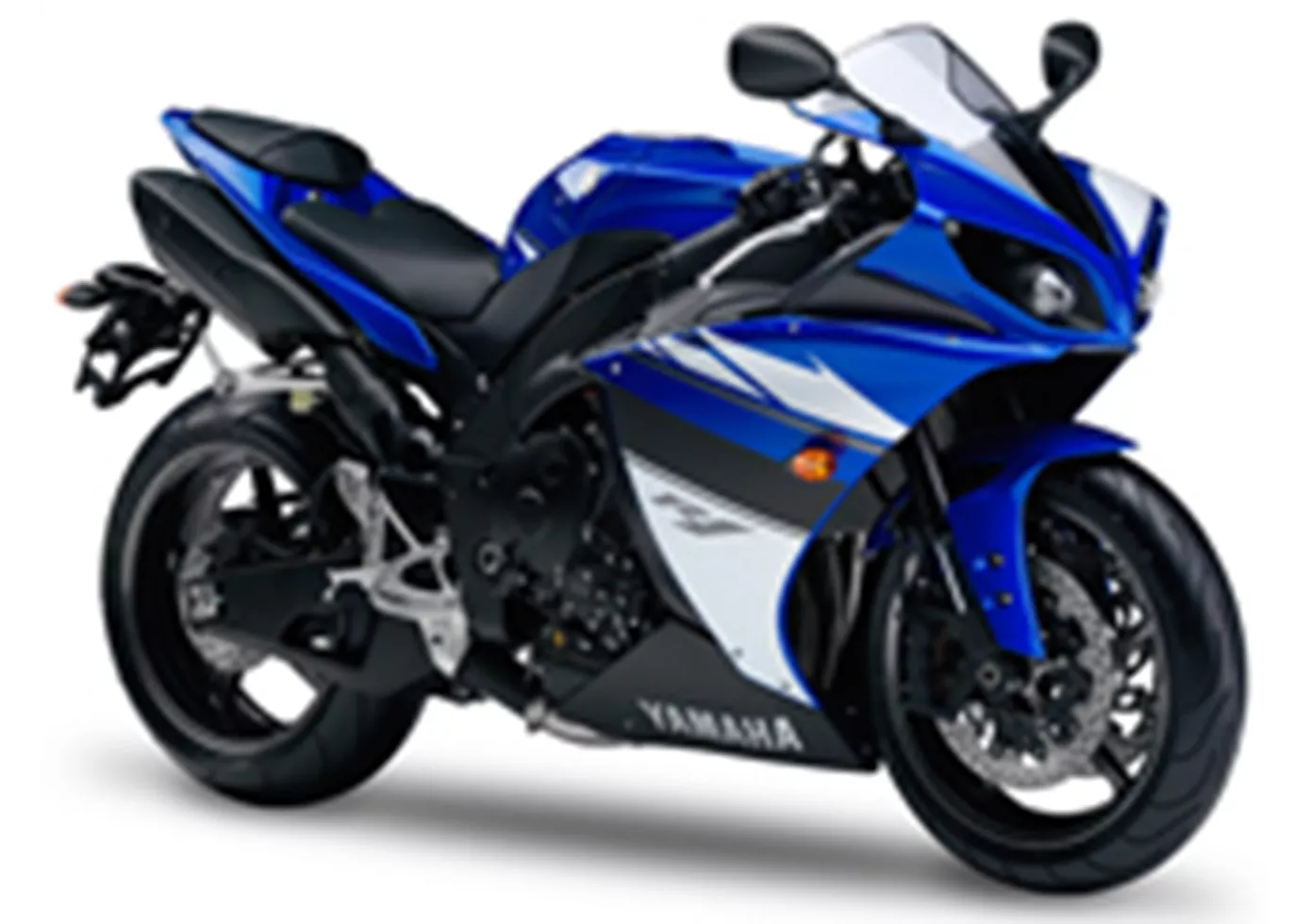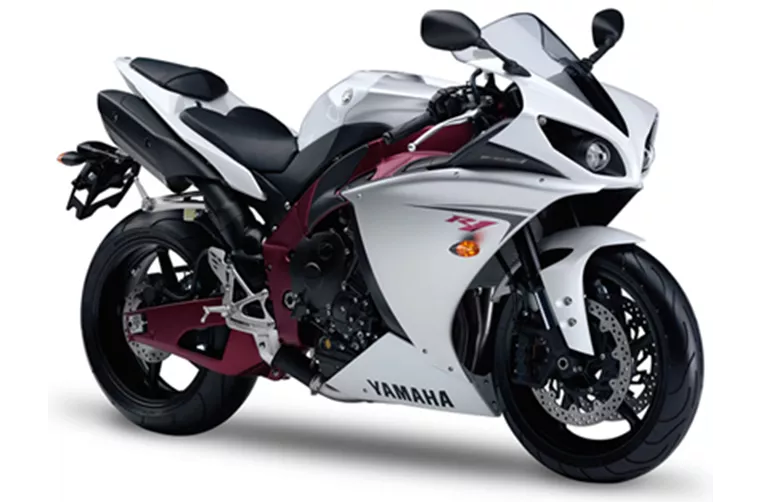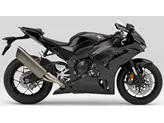Kawasaki Ninja ZX-10R 2010 vs. Yamaha R1 2009

Kawasaki Ninja ZX-10R 2010

Yamaha R1 2009
Vue d’ensemble - Kawasaki Ninja ZX-10R 2010 vs Yamaha R1 2009
The Kawasaki Ninja ZX-10R model year 2010 and the Yamaha R1 model year 2009 are both highly regarded supersport motorcycles. While they share many similarities in terms of engine type, displacement, and frame material, there are some notable differences between the two.
In terms of engine specifications, the Kawasaki Ninja ZX-10R 2010 features an in-line four-cylinder engine with a bore of 76 mm and a stroke of 55 mm. It produces an impressive 187 horsepower and 113 Nm of torque, with a compression ratio of 12.9. On the other hand, the Yamaha R1 2009 also has an in-line four-cylinder engine, but with a slightly larger bore of 78 mm and a shorter stroke of 52.2 mm. It generates 182 horsepower and 115.5 Nm of torque, with a compression ratio of 12.7.
Both motorcycles have a similar suspension setup, with telescopic forks at the front. However, the Kawasaki Ninja ZX-10R 2010 features an upside-down telescopic fork, which provides better stability and control during aggressive riding. The Yamaha R1 2009, on the other hand, has a conventional telescopic fork.

Kawasaki Ninja ZX-10R 2010
In terms of chassis, both motorcycles feature an aluminum frame. However, the Kawasaki Ninja ZX-10R 2010 has an extruded frame, which is known for its lightweight and rigidity. The Yamaha R1 2009, on the other hand, has a Deltabox frame, which is also lightweight and provides excellent handling characteristics.
When it comes to braking, both motorcycles have a double disk setup at the front. The Kawasaki Ninja ZX-10R 2010 is equipped with a highly efficient braking system and features integrated electronics, including traction control and ABS. The Yamaha R1 2009 also has a reliable braking system, but lacks the integrated electronics found on the Kawasaki.
In terms of dimensions and weights, both motorcycles have the same wheelbase of 1415 mm. The Kawasaki Ninja ZX-10R 2010 has a slightly lower seat height of 830 mm, compared to the Yamaha R1 2009's seat height of 835 mm. Additionally, the Yamaha R1 2009 has a slightly larger fuel tank capacity of 18 liters, compared to the Kawasaki Ninja ZX-10R 2010's 17 liters.

Yamaha R1 2009
In terms of strengths, the Kawasaki Ninja ZX-10R 2010 stands out for its extremely precise traction control, efficient braking system, integrated electronics, positive ABS system, and high engine power. On the other hand, the Yamaha R1 2009 is praised for its sophisticated sound, good feeling for power delivery, easy handling, hydraulic spring preload, and high level of workmanship.
However, both motorcycles also have their weaknesses. The Kawasaki Ninja ZX-10R 2010 is criticized for its suboptimal transmission, which is known for tight gearshifts. On the other hand, the Yamaha R1 2009 has a suboptimal seating position, which may not be comfortable for all riders, and can be somewhat difficult to handle during long-distance cornering.
In conclusion, the Kawasaki Ninja ZX-10R 2010 and the Yamaha R1 2009 are both formidable supersport motorcycles with their own unique strengths and weaknesses. Ultimately, the choice between the two will depend on the rider's preferences and priorities, whether it be power, handling, or comfort.
Caractéristiques techniques Kawasaki Ninja ZX-10R 2010 par rapport à Yamaha R1 2009
Avantages et inconvénients en comparaison
Avantages et inconvénients en comparaison
Kawasaki Ninja ZX-10R 2010

Les fans de Ninja n'ont pas d'autre choix que d'acheter la nouvelle 10. Elle est plus légère, plus puissante, plus souple et pourtant plus facile à piloter que n'importe quelle autre ZX-10R jusqu'à présent. La Kawa se présente également comme supérieure aux autres japonaises. Outre les motos européennes, les émotions, les préférences pour certaines couleurs et formes entrent certainement en jeu.
Yamaha R1 2009

Bien entendu, le nouveau moteur R1 a également subi tous les tests de résistance rigoureux de Yamaha et est livré avec les mêmes garanties que les autres motos Yamaha. En effet, jusqu'à présent, ce sont précisément les thèmes de la durabilité et de la fiabilité qui empêchaient la production en série d'un tel moteur.
Comparaison des prix Prix moyen du marché Kawasaki Ninja ZX-10R vs Yamaha R1
There are a few key differences between a Kawasaki Ninja ZX-10R 2010 and a Yamaha R1 2009. It takes less time to sell a Yamaha R1 with 45 days compared to 60 days for the Kawasaki Ninja ZX-10R. Since model year 2005 1000PS.de editors have written 51 reviews for the Kawasaki Ninja ZX-10R and 80 reviews for the Yamaha R1 since model year 2005. The first review for the Kawasaki Ninja ZX-10R was published on 1/11/2004 and now has more than 2,900 views. This compares to more than 3,900 views for the first review on Yamaha R1 published on 4/28/2003.


















